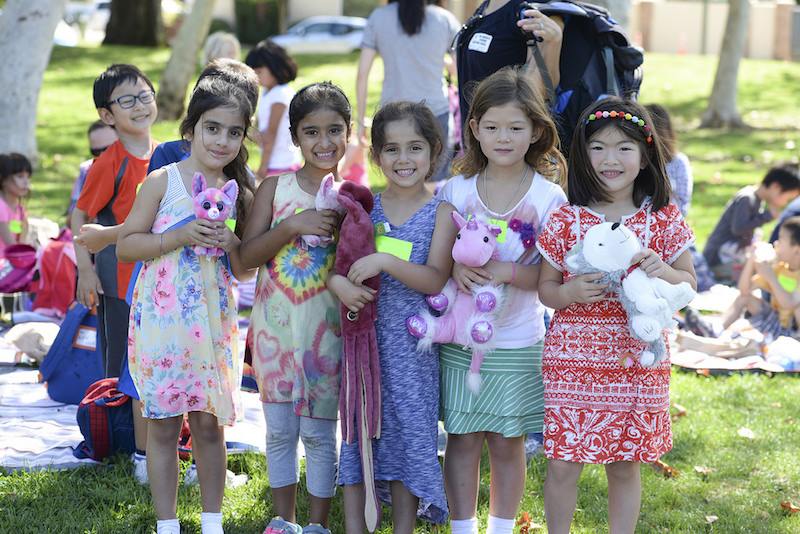First, don’t panic. Your child is probably going through the – perfectly normal – ‘silent period’ many kids go through when learning a second language.
The Silent Period?
The ‘silent period’ is also known as the ‘silent phase’ or the ‘nonverbal period’. We’ve known about it for decades.
It’s a normal period in the acquisition of a second language in young children. Its main feature is a lack of talking (Tabors, 1997) – i.e. silence – often just after starting preschool or kindergarten. It happens most frequently with bilingual children of 3-8 years who are suddenly exposed to an environment where people are speaking a language that is different from the child’s first language.
Why does it happen?
The silent period typically starts when children realise that their first or ‘home’ language is not understood at preschool or school, and their second language skills are insufficient for what’s required to communicate effectively. They then stop speaking completely in that setting for a while.
How long does it last?
Usually, shorter than 6 months. In many cases, it is significantly shorter than 6 months. The Silent Period tends to go for longer with very young kids, e.g. with 3-year olds (Tabors, 1997).
How does it progress?
Typically, like this:
(1) The child is completely silent at preschool or school for a period.
(2) The child starts to repeat words in the second language.
(3) The child practices words and phrases in the second language quietly and to themselves (i.e. not to communicate with others). This has been described as a phase when language development ‘goes underground’ or social speech development ‘turns inward’ (Saville-Troike, 1998).
(4) The child decides to ‘go public’ with the new language, and starts talking with others (e.g. Samway and Mckeon, 2002).
Is the Silent Period the same thing as Selective Mutism?
No. But they are often confused:
- The silent period is a normal stage of second language development for bilingual children exposed to a new environment where others speak a language other than the child’s ‘home language’.
- Selective mutism is a rare anxiety disorder whereby a child consistently fails to speak in specific social situations where there is an expectation of talking (e.g. at school), despite speaking in other situations. The duration of the ‘disturbance’ has to be at least a month. But it does not include situations where the failure to speak is because of a lack of knowledge of, or comfort with, the spoken language required in a social situation (DSM-5). (You can read more about selective mutism here.)
Confusingly, there is some evidence that immigration and the need to speak a second language may be a risk factor in the development of selective mutism (e.g. Elizur & Perendik, 2003; Viana et al., 2009). But most children who go through the Silent Period progress uneventfully through the steps outlined above. Children with selective mutism, on the other hand, make no such progression, and often get ‘stuck’ in stages (1), (2) or (3), never communicating openly in words. In addition, selective mutism tends to affect both languages, although the symptoms tend to be more evident in the child’s second language (usually the language used in the preschool or school) (Toppelberg et al., 2005).
When should I seek professional help?
If your child’s silence at preschool/school is:
- prolonged;
- disproportionate to his or her second language knowledge and exposure;
- present in both languages; and/or
- happens at the same time other signs of intense shyness or anxiety are observed; or
if, for any reason, you become very worried about your child’s happiness or participation at preschool/school, you should consider seeking advice from a clinical psychologist and speech pathologist with experience in working with bilingual children and children with selective mutism.
Related articles:
- When silence is not golden: evidence-based treatment for children with selective mutism
- My child is learning two languages: what do I need to know about bilingual development?
- Language problem or English as a second language issue?
- Can language development tips help ESL learners learn English?
Principal source:
Toppleberg, C. O., Tabors, P., Coggins, A., Lum, K. (2005). Differential Diagnosis of Selective Mutism in Bilingual Children. Journal of American Academy of Adolescent Psychiatry, 44:6, 592-595.
Viana, A. G., Beidel, D.C., Rabian, B. (2009). Selective mutism: A review and integration of the last 15 years. Clinical Psychology Review, 29, 57-67.
Image: https://tinyurl.com/ybwkyopz

Hi there, I’m David Kinnane.
Principal Speech Pathologist, Banter Speech & Language
Our talented team of certified practising speech pathologists provide unhurried, personalised and evidence-based speech pathology care to children and adults in the Inner West of Sydney and beyond, both in our clinic and via telehealth.


Leave a Reply